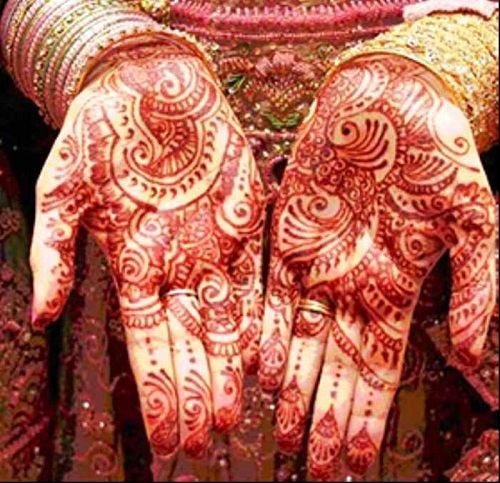FWP:
Nazm observes that the beloved's hennaed fingertip could resemble, in color and shape, a drop of blood. (For more about henna, see {18,4}.) Or else her imagined fingertip might poke or prod the heart, somehow contriving to elicit one last barely-surviving drop of blood. Or else the very thought itself (of her fingertip) might goad or stimulate the heart and elicit that last blood-drop. As so often, we can't tell whether the 'hennaed fingertip' and the 'drop of blood' are the same thing, or different. And since the whole experience is one of 'imagining' anyway, it hardly matters.
Moreover, it might not be a mere 'single' or 'last' drop of blood, but a 'particular' or 'unique' or 'excellent' one instead (or in addition). The semantic versatility of that little ik is a powerful tool that Ghalib loves to use. Here, as usual, he's careful not to dilute its ambiguity by adding any other description at all.
Note for translation fans: In the second line, how to translate that colloquial, vital,
but elusive to ? Positioned where it is, it's not part
of an implied 'when-then' or 'if-then' structure. It qualifies na:zar
aatii hai -- but how, exactly? It's easy to feel its force in Urdu, but impossible to find a really satisfying counterpart expression for it in English.

Hali:
The word to that is in the second line produces the meaning that because of continually weeping blood from the eyes, in the heart not a single drop of blood remained. Thus he considers the image of the beloved's hennaed finger a lucky break, for because of it a drop of blood can be seen in the heart.
==Urdu text: Yadgar-e Ghalib, pp. 160-61